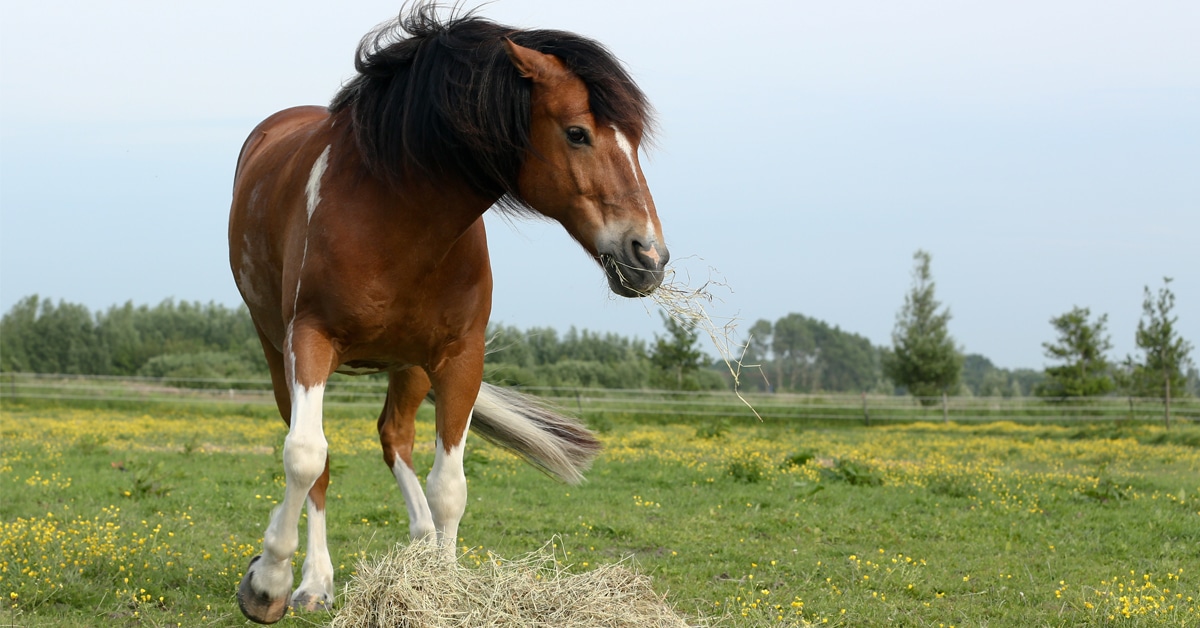It’s the kind of mystery no horse owner likes to encounter: a previously healthy horse out on pasture suddenly develops severe muscle weakness and distress, with no obvious cause. In Europe, this frequently fatal muscle disease has been named atypical myopathy, but it seems to be very closely related to – or even the same as – the North American disease called seasonal pasture myopathy (SPM). It’s a frightening disease, but the good news is that recent research has discovered a probable cause for the syndrome, and that opens up the possibilities for new ways to prevent and treat the illness.
Beware the box elder
Dr. Katharina Lohmann of the University of Saskatchewan’s Western College of Veterinary Medicine says that the underlying biochemical defect seems to be the same in both atypical myopathy and SPM, and the symptoms match as well. ‘There is, however, a possibility that there are different causes in North America and in Europe. In fact, there may be more than one cause in each location.’
Two studies published in 2013 have suggested that what causes this devastating muscle breakdown is a toxin called hypoglycin A, which is found in the seeds of certain trees. The US study linked the development of the disease to seeds from the box elder tree in North America; the European research found the affected horses on that continent had access to seeds from sycamore trees (known in some European countries as sycamore maples and completely different from North American sycamore trees). The amount of hypoglycin A varies from seed to seed and throughout the season.
Sorting out the symptoms
One of the trickier aspects of atypical myopathy or SPM is that it can easily be mistaken for other conditions such as colic in the beginning. The horse with this condition is very weak and in pain; he often lies down and is unable to get up, with increasing periods of recumbency. ‘Basically, the muscles break down and dissolve,’ says Lohmann. ‘The horse is usually clearly in distress. His urine may be dark and coffee-coloured [myoglobinuria], and his mucous membranes congested and his gums dark in colour. The temperature is usually normal.’ The muscles most often affected are those in the shoulders and back, where stiffness and muscle tremors may be observed. Other clinical signs include tachycardia (rapid, irregular heartbeat), rapid respiration, dyspnea (trouble breathing), and occasionally choke. The muscles that control respiration and the heart muscle can also be damaged, sometimes fatally. Death can occur within 72 hours of the onset of symptoms.
Although the disease is fatal in as many as 75% of cases, with good veterinary care affected horses can survive. Getting an accurate diagnosis is the first step and Lohmann encourages horse owners to contact their veterinarians promptly if they see the symptoms described above. While the damaged muscles can regenerate, some scarring is possible, and if the kidneys or heart are involved there may be longer-term effects. In one reported case, a horse still had a heart arrhythmia ten weeks after recovering from the disease. Prompt veterinary care can make a big difference in the outcome for many animals.
Reducing the risk
The studies have produced very convincing evidence regarding the role of hypoglycin A, says Lohmann, but she adds that other possible causes of atypical myopathy and SPM have not been completely ruled out. Previous studies have suggested that there are consistent risk factors and protective factors that horse owners should take into consideration. ‘It’s important to understand that these are steps you can take to reduce the risk – they are not a guarantee that your horse won’t become ill,’ adds Lohmann.
Many of the recommendations, in fact, are just good pasture management practices that will benefit your horses in other ways as well. Lohmann’s list includes:
– Avoid having box elder trees (or sycamore trees, in Europe) in or near your horse’s pasture. Be sure to clear any fallen branches promptly. The days following a storm appear to produce a higher risk, possibly because seeds or branches may be blown into the field.
– Provide enough additional feed in the pasture, but avoid feeding on the ground. In one study, most cases occurred when horses were on sparse pastures without extra feed provided.
– Provide plenty of water in automatic waterers or from a tank or trough, rather than relying on streams or ponds on the land. It’s possible that this is a risk because seeds could be carried along on the stream and ingested by the horses.
– Avoid higher-risk times on pasture (fall, spring and after storms) especially for younger horses who may be most at risk. Limiting the time on pasture to six hours or less each day can also be protective.
– Regular deworming and vaccination have been shown to be a safeguard.
– Provide regular exercise, which has proved helpful.
– Provide a salt/mineral block in the pasture.
– Avoid spreading manure on the pasture. However, ploughing, seeding and mowing the pasture are all protective factors.
Lohmann adds that if one horse in a herd out on pasture develops this illness, all the horses should probably be moved from that pasture. ‘They could all be at risk,’ she explains. ‘We may see multiple horses from the same property becoming ill – but it may be one the first day, another the next day, another the following day. You need to see this as a group problem, not an individual disease.’
Supportive treatment
At this time there is no treatment other than supportive care with rest, IV fluids, pain medication and sedation, vitamins B, C, and E, anti-inflammatories and anti-oxidants. Lohmann says that some horses suffering from this disease have ravenous appetites, and giving them glucose or high-carbohydrate meals has been recommended if their blood sugar is low. The addition of IV fluids is important, because the byproducts from breakdown of the muscles are passed through the kidneys, and without extra fluid to help this process the kidneys can be damaged.
While further research will be needed to determine if this disease has other causes, the discovery of the potential links between certain tree seeds, hypoglycin A, and seasonal pasture myopathy offers hope for new strategies to prevent and treat a very serious condition.
The Latest










